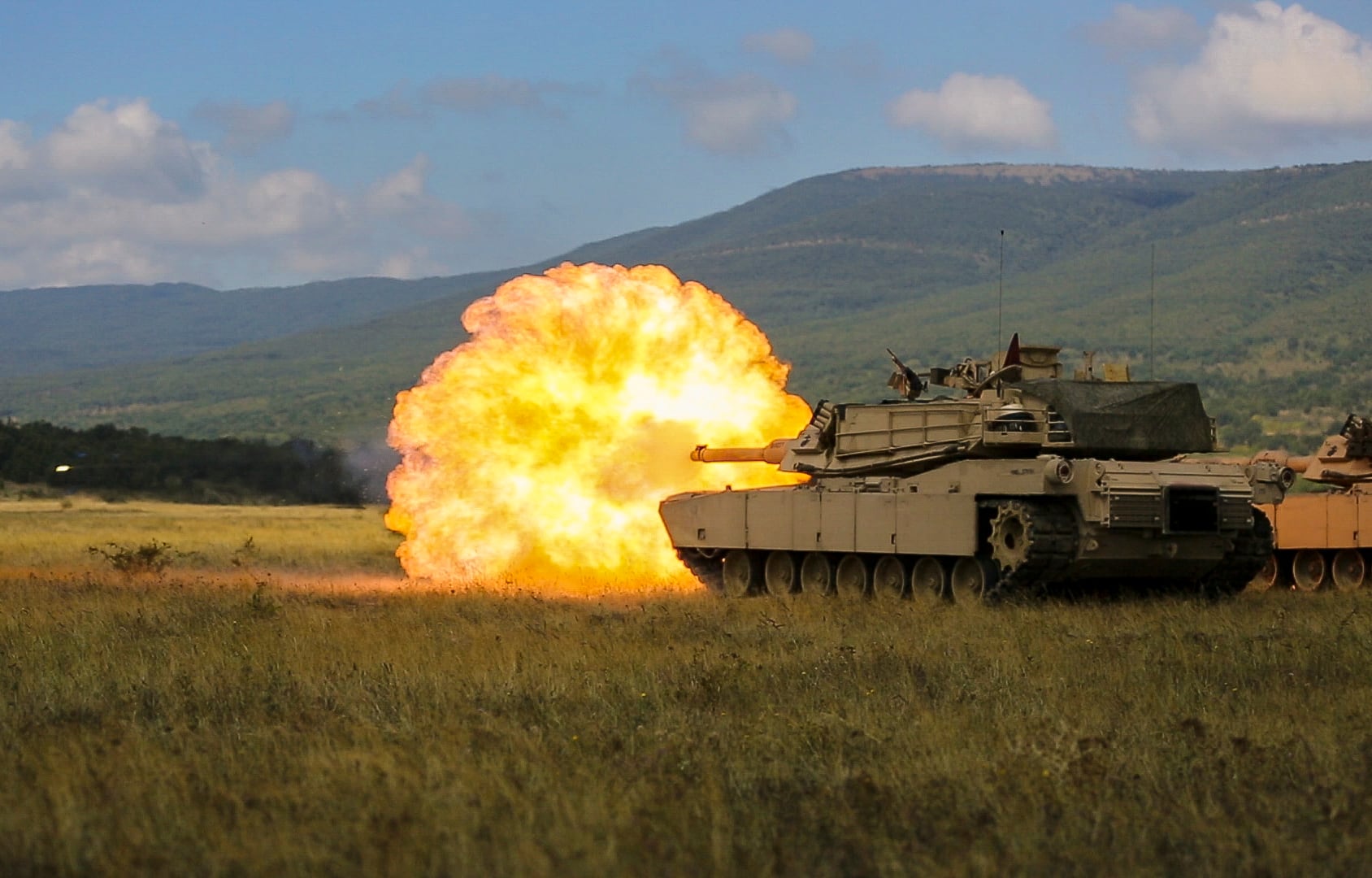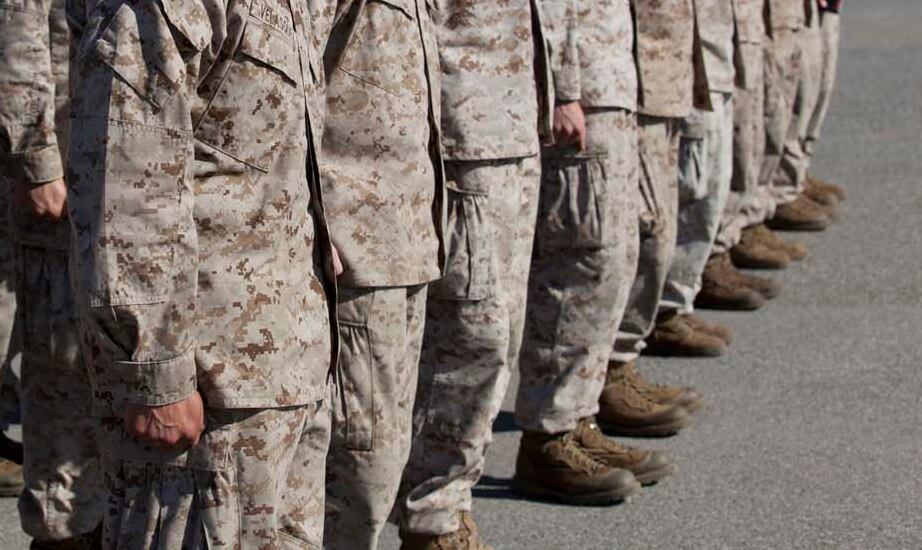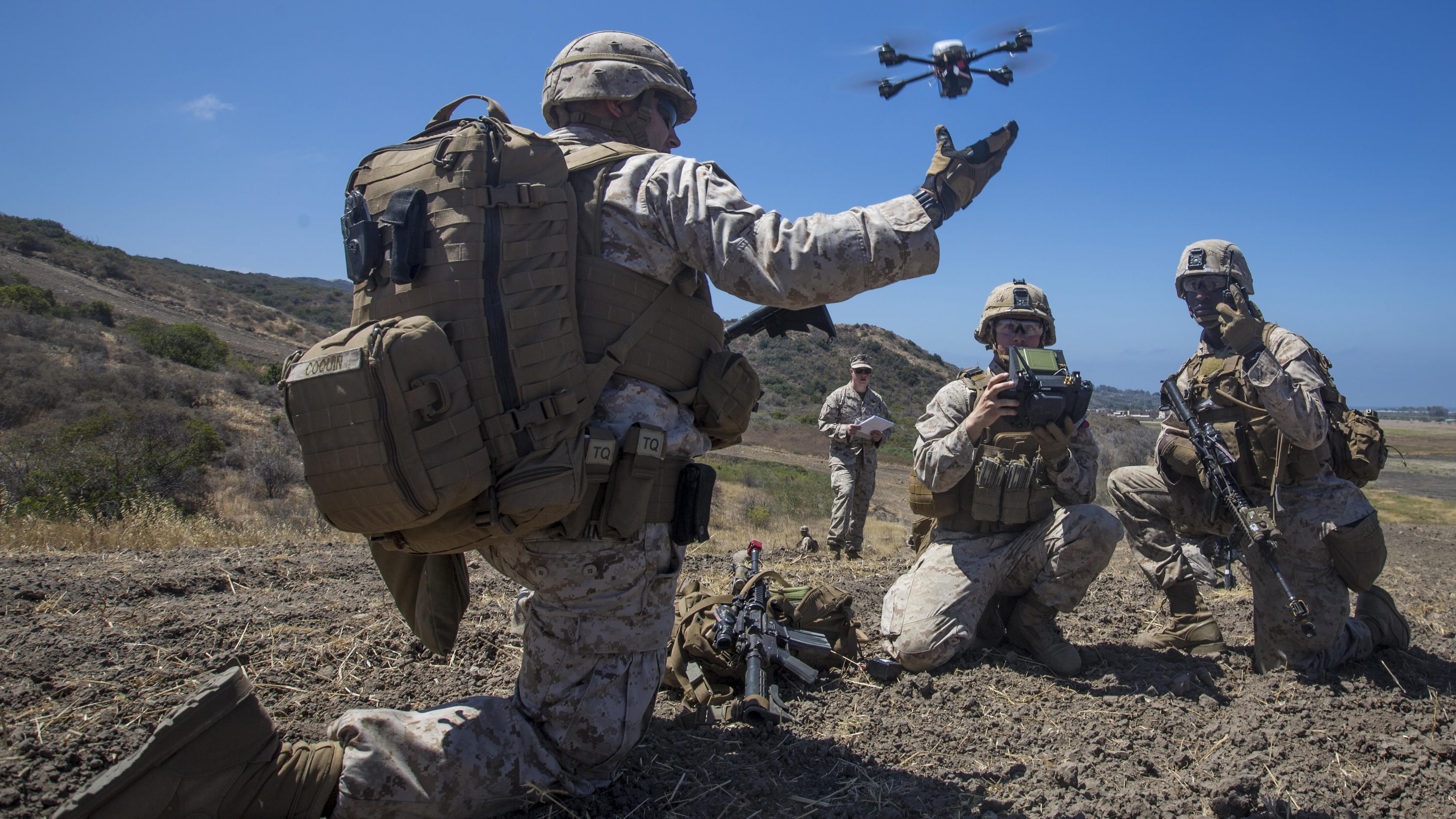President-elect Donald Trump wants to build a larger Marine Corps capable of simultaneously winning two wars, a build-up that would upend the service's plan to remain at their post-drawdown force of 182,000 Marines.
"We will build a Marine Corps based on 36 battalions, which the Heritage Foundation notes is the minimum needed to deal with major contingencies," Trump said at the Sept. 7 speech where he laid out his vision for a larger military.
The incoming administration's plans will likely render the Marine Corps' ongoing force structure review out-of-date, as it's based on sticking with the current force of 24 active-duty infantry battalions, two active-duty tank battalions and other units that support the service's ground combat element mission.
"It would be great if we could have the resources to have 190,000 Marines, but we’re not assuming that," Neller said in August, when he spoke at the Center for Strategic and International Studies think tank in Washington."That’s a decision that’s not in my job jar. So we’re going to operate under the assumption that we’re going to have 182,000 Marines because that’s what we’ve been resourced for. So we’ve got to figure out how we’re going to reshape this Marine Corps."
For the moment, the Marine Corps’ plans remain unchanged, but it remains to be seen what will happen when the new president takes office.
"We've been focused on transition and the new administration, but it's too early to lay out specific numbers if we were to grow," said Neller’s spokesman Lt. Col. Eric Dent.
Two-war force
A retired Marine officer is the principal author of the review for the conservative Heritage Foundation think tank that recommends the Marine Corps grow to 36 active-duty infantry battalions and add one active-duty tank battalion.
"We say that the United States needs to have the ability to handle two wars – not that we’re saying that we’re going to be in two wars simultaneously, but if you only have a one-war force and you have to commit to it, that’s everything," said Dakota Wood, a retired Marine lieutenant colonel, in a phone interview after the election.
Traditionally, the Marine Corps has committed 15 battalions to conflicts such as Vietnam and the Gulf War, Wood said. Having 30 battalions plus an extra six for units that are training or otherwise unavailable to deploy would allow the Marines to be more than a one-war force, he said.
Currently, 31,277 Marines are forward deployed, and that translates to about 17 percent of the service's active-duty force, said Marine Corps spokeswoman 1st Lt. Danielle Phillips. Of those Marines deployed, 7,365 are aboard Navy ships and most are part of Marine expeditionary units, she said.
The Marine Corps' proposed budget for fiscal 2017 called for about $13 billion in spending for personnel costs to support a force of 182,000 Marines. A battalion typically has 900 Marines, so an additional 12 infantry battalions and one tank battalion could increase the Marine Corps' end strength to 193,700.
Using the fiscal 2017 personnel costs as a base, the addition of 11,700 Marines could add nearly $1 billion per year extra just in personnel costs, before equipment and training are factored in.
"A Marine Corps of 36 battalions would enable an ability to handle a major conflict and an ability to handle other taskings around the world, wherever this may be; your unit deployment program to Okinawa and the MEU deployments that go into all the key regions," Wood said.
The Marine Corps also needs more "muscle," in terms of heavy firepower and armor units, and that is why the Heritage Foundation is recommending the service have a total of three active-duty tank battalions, as it did in the 1990s, he said.
"Armor is almost always useful," he said. "Since one cannot predict where a crisis will emerge, having armor at-hand and associated with permanently stationed forces makes sense. It also enables routine interaction/training, important for the force to have some level of familiarity and competence in combined arms operations."

Marines with the Bulgaria-based Combined Arms Company fire an M1A1 Abrams tank during a field training exercise in Eastern Europe. The new Marine unit was stood up last year to assure allies in the region concerned about Russian aggression.
Photo Credit: Lance Cpl. Melanye Martinez/Marine Corps
Rep. Duncan Hunter, a Marine veteran, said he welcomes the idea of increasing the size of the Marine Corps, but the more immediate concern is ending across-the-board cuts known as sequestration and giving the service more money for training and maintenance.
Recent Marine Corps plane and helicopter crashes show that the service needs more money to end its aviation readiness crisis, said Hunter, R-Calif.
"Let’s listen to the Marine Corps," he said. "I think the Marine Corps would say: ‘That’s all great, absolutely; we would love to have those numbers, but we also need maintenance funding.’"
Hunter also said that the size of the Marine Corps should be dictated by what President Trump wants to do.
"I think, finally, for the first time in eight years we’re going to have an overall plan of what our goals are throughout the world and overlay that with our military and what our availabilities are for everybody," he said.
Marine Corps Force 2025
The Corps is nearing the end of a force structure review that looks at how the service can dedicate more Marines to deal with emerging threats without having any more Marines.

Photo Credit: Cpl. Robert Reeves/Marine Corps
After more than a decade of fighting, Marines have become experts at fighting insurgents and terrorists, but the service needs to dedicate more Marines to missions essential for fighting near-peer adversaries, Neller said in September.
"That insurgent didn’t have electronic warfare," Neller said at the Marine Corps League’s Modern Day Marine expo. "That insurgent didn’t have an air force. That insurgent didn’t have effective indirect fire. That insurgent didn’t have the ability to take out our networks or jam our comms."
Marine Corps Force 2025 is the service’s ongoing review of how it can re-purpose Marines for different missions and whether to update military occupational specialties to reflect new technologies and responsibilities that will be added.
"I think we’ve got a good idea of the capability sets that we need to either grow or add," Neller told Marine Corps Times in September. "It’s information operations, cyber, electronic warfare, deception, intelligence, ISR [intelligence, surveillance and reconnaissance]. We want to make sure we’ve got enough engineering, mobility, counter mobility."

Lance Cpl. Benjamin Cartwright, an infantry Marine with Kilo Company, 3rd Battalion, 5th Marine Regiment, launches the Instant Eye MK-2 Gen 3 unmanned aerial system during an exercise for Marine Corps Warfighting Laboratory's Marine Air-Ground Task Force Integrated Experiment on Marine Corps Base Camp Pendleton, California, in July. In October, an Army colonel raised questions about whether load standards at Infantry Officer Course are unrealistic, prompting a wide response from Marines.
Photo Credit: Pfc. Rhita Daniel/Marine Corps
Neller has consistently said he does not expect Congress to give the Marine Corps funding to grow beyond its active-duty end strength, which will be 182,000 Marines by the end of fiscal 2017.
If Trump decides to increase the size of all of the military services, it doesn’t mean that the Marine Corps’ force structure review needs to be abandoned, Wood said.
"If the new administration comes in and says: ‘We’re going to spend more on the military to be able to reverse the declines generated by sequester and to expand its capacity to handle new missions, like cyber;’ then the Marine Corps would go back and say: ‘Oh, I have a larger bank account; I can have more Marines,’" Wood said.
By getting larger, the service would also be able to give Marines more dwell time at home between deployments, he said.
"The Marine Corps has said: ‘We’re at 1:2 deployment to dwell ratio; it’s wearing out the force,’" Wood said. "Any smaller and it will have to go to 1:1. They would like to get back to a 1:3: so one deployment cycle and then two or three back home – seven months out, 21 months back. But you have to be able to grow the force beyond its current 180,000 level."

